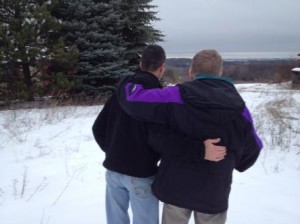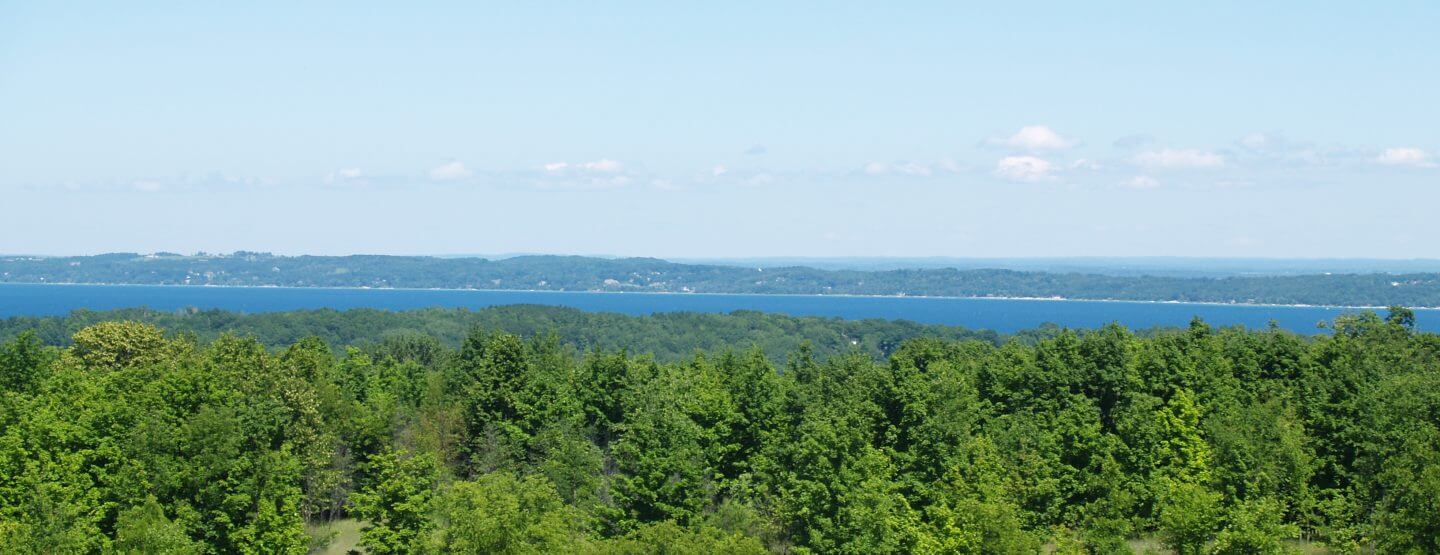 One Good Turn Deserves Another
One Good Turn Deserves Another
Gene Strang, 77, carries a little pocket notebook with him wherever he goes. In it, he has written down details of his life that can momentarily elude him: the town in Florida where his sister resides, the name of the assisted living facility that he just recently moved into in Traverse City, or the year that he had his stroke (2006).
When it comes to talking about the beautiful 80 acres he has recently preserved, however, the notebook gets pushed aside and the words flow, unimpeded.
“I’ve always wanted to preserve it,” says Gene of the land, homesteaded by his grandparents and located near our DeYoung Natural Area. I met Gene at a coffee shop in Traverse City, along with his friend and advisor, John Roe, to talk about the project. Gene beams as he describes the 50,000 trees he has planted over 10 years and how a pristine stream on the land flows into Cedar Lake. He recounts how developers have knocked on his door over the years: Majestic views of Grand Traverse Bay and a ridgeline where four or five homes could be built make it a developer’s dream.
“I never wanted to see anything built there, but I don’t think my heirs feel the same way,” says Gene, who never married and has no children. “I wanted to take steps now to make sure it always stays the same.”
When the Conservancy acquired the DeYoung Natural Area, Gene says he was thrilled and more certain than ever that he wanted to follow in the DeYoung family’s footsteps. He had known Louis DeYoung his entire life and greatly admired him. “He was a fantastic man,” says Gene.
Gene’s friend John has helped him to realize the dream of protecting his land while also watching out for his friend’s financial interests. They met years ago while working in retail in Traverse City. “We both had German shepherds and we were always talking about our dogs,” says John.
One day John, then 29, was bemoaning the news that his landlord was selling the house he was renting just as summer was coming on. He was looking for a place to park a pop up camper he had purchased. Gene offered his land.
John was grateful. “I woke up every morning to a million dollar view,” he says. The camper sat about a stone’s throw from an earth sheltered-style house Gene had built. When fall arrived, Gene offered a room for rent in the house and the two hauled firewood for the coming winter. This arrangement went on for three years until John met his wife, Rachel and moved out.
Gene says that John is like the son he never had. After his stroke, he asked John to serve as his power of attorney—a role that John takes very seriously. Although John shares Gene’s love for the land he wasn’t sure that selling a conservation easement on it was in Gene’s best interests at the time.
“Gene kept talking about it, but I saw the real estate market dropping,” says John. “I wanted to honor his wishes but also to look out for his finances. We decided to wait, but we kept on talking about it.”
This year, the time seemed right. Funds from the Grand Traverse Bay Watershed Initiative were available to purchase 50 percent of the cost of the conservation easement. Funds from the Initiative are used to protect the lands that protect the water quality of the Bay. In order to claim these state funds, the landowner must donate 25 percent of the land value and the Conservancy provides a 25 percent match. “The appraisal came in right where I had hoped it would,” says John. “I’m happy with the funds Gene received in exchange for restricting the land. Matt Heiman was great to work with and our attorney, Ellen Fred, helped to guide us as well.”
Gene retains ownership of the land and owns 20 additional acres around the house that are unrestricted. He will earn income from a farmer who will lease a portion of the 80 acres. “It could be a great microclimate for grapes or hops,” says John. “The easement makes it more appealing to farmers to lease and down the road the easement also makes the land more affordable for a farmer to buy it. It’s a win-win.”
As we finish our coffee, I mention the philosophy that guides our land protection work: “A good conservation transaction must be good for both the land and the people involved.”
“That certainly is the case with us,” says John, looking at Gene, who smiles and nods.
With that we put our coats on and drive over to Strang Road so that I can snap a photo. The snow keeps us from reaching the highest spot and so we park near the old barn. Because the ground is uneven, John wraps his arm around Gene’s shoulders. As I watch them make their way toward the spot I have asked them to stand, I think about the definition of family, and how it isn’t always about who you are related to.–Carolyn Faught; posted December 11, 2013.




